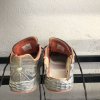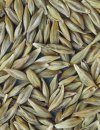Hey, so this is my first Camino (Le Puy) and I've just finished my first day. It's going to sound so naive, but even though I really enjoyed the walk and really didn't find it challenging at all (just a long day!), I developed the biggest blisters on my heels that I've ever had. And I did all the typical hot spot treatment too!
I realised that even though I used these boots a fair amount last year for hiking, I never hiked in them for a continuous 6-7 hours. So my guess is that the heat and hiking have caused my feet to swell up and now the boots are too small, causing blisters in the heels. When I bought them I was sure they were the right size!
Does anyone have any advice for hiking (especially in hilly areas for 7hrs) with open blisters in shoes too small? I'll be buying better shoes at my next stop and I'll wear thick socks, liners, and a bunch of lamb's wool tomorrow...but I'm sure it'll still be absurdly painful. I guess I'll just have to grit my teeth and maybe take a zero day after...any words of wisdom or similar stories are encouraged! Thanks!
I realised that even though I used these boots a fair amount last year for hiking, I never hiked in them for a continuous 6-7 hours. So my guess is that the heat and hiking have caused my feet to swell up and now the boots are too small, causing blisters in the heels. When I bought them I was sure they were the right size!
Does anyone have any advice for hiking (especially in hilly areas for 7hrs) with open blisters in shoes too small? I'll be buying better shoes at my next stop and I'll wear thick socks, liners, and a bunch of lamb's wool tomorrow...but I'm sure it'll still be absurdly painful. I guess I'll just have to grit my teeth and maybe take a zero day after...any words of wisdom or similar stories are encouraged! Thanks!




























